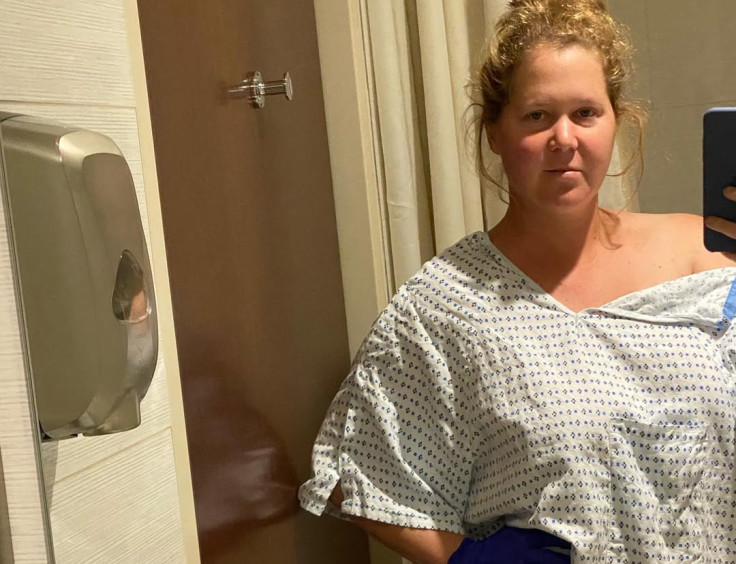Endometriosis Lesions Explained: What Bindi Irwin's Emergency Surgery Reveals About the Disease
According to medical experts, these lesions can attach to organs like the ovaries, bladder, intestines or the lining of the pelvis.

When the wildlife advocate Bindi Irwin, daughter of the late wildlife personality Steve Irwin, was rushed to hospital during a recent trip to Las Vegas, the assumption was that she was dealing with a straightforward case of appendicitis. Instead, what followed was a reminder of a deeper health issue she's long been living with — endometriosis.
The 26-year-old Australian conservationist and daughter of Steve and Terri Irwin, underwent emergency surgery, which not only involved removing her appendix but also revealed 14 new endometriosis lesions. The procedure included the repair of a hernia as well. In an Instagram message to her supporters, recorded shortly after surgery, Irwin appeared pale but resolute, thanking her doctors and loved ones and vowing to recover 'one step at a time.'
While Irwin, who is also a mother of a four year old daughter, has shared her endometriosis journey before where she revealed how she struggled with the condition while conceiving. However, this latest health scare has sparked renewed interest in a condition that remains widely misunderstood, despite affecting millions of girls and women worldwide.
What Are Endometriosis Lesions?
At the centre of endometriosis are lesions — patches of tissue similar to the lining of the uterus, growing where they don't belong. According to medical experts, these lesions can attach to organs like the ovaries, bladder, intestines or the lining of the pelvis. In some rare cases, they've even been found in the lungs or diaphragm.
Unlike normal menstrual tissue, which exits the body during a period, these stray cells have nowhere to go. They react to monthly hormonal changes just the same — building up, breaking down, and bleeding. The result is often chronic inflammation, internal scarring, and pain that can interfere with everyday life.

According to VeryWellHealth, lesions vary in type. Some sit close to the surface, while others grow deep into surrounding tissue — the latter often causing more severe symptoms and requiring delicate surgical removal. There are also cysts known as endometriomas, which are filled with old blood and can appear on the ovaries.
Coomon symptoms of endometriosis can include severe pelvic pain or cramping, heavy or irregular periods, pain during sex or bowel movements, fatigue, nausea and bloating.
For some, symptoms are mild. For others, like Irwin, the condition can be life-altering.
Bindi Irwin's Case Highlights a Complex Condition
Irwin first went public with her endometriosis in 2023 after undergoing surgery that uncovered over 30 lesions, many of them difficult to remove. She had spent years managing unexplained symptoms including fatigue, severe pain, and nausea — a common experience for many with the condition.
However, the recurrence of lesions just a year later highlights one of the more challenging aspects of endometriosis: it often comes back. According to the subject matter experts, even after successful surgeries, tissue can regrow, and symptoms can persist. This makes long-term management essential, often involving a combination of pain relief, hormone therapy, and sometimes repeat operations.
Why Many Suffer in Silence
One of the most troubling facts about endometriosis is how often it goes undiagnosed. In fact, on an average, it can reportedly takes seven to ten years for someone to receive a proper diagnosis. Usually, a definitive diagnosis requires laparoscopy — a surgical procedure where a camera is inserted into the abdomen to locate and potentially remove the abnormal tissue. However, in most cases the condition is never diagnosed on time.
This delay can be due to the wide range of symptoms — from mild cramping to severe, life-disrupting pain — and the misconception that period pain is simply something to be endured. Along with Irwin, many other celebrities in the last couple of years have brought visibility to a condition that is still stigmatised or dismissed by some.

Actress and comedian Amy Schummer once revealed how difficult her preganancy became due to the condition. 'I was throwing up through the first hour of my C-section. It's supposed to take about an hour and a half — mine took over three hours because of my endometriosis, and that was really scary,' she shared duing a 2019 episode of Dr. Berlin's Informed Pregnancy Podcast.
Celebrate public figure and Emmy nominated actress, Padma Lakshmi said that it took more than 20 years for her to get a diagnosis. 'I didn't want the next generation of women to go through what I went through, to feel betrayed by their own bodies or to feel alone,' she says on the Endometriosis Foundation of America's website, which she co-founded in 2009.
These stories serves as a reminder that persistent pain isn't normal, and people living with these symptoms deserve to be taken seriously.

According to World Health Organisation, one in ten women — and people assigned female at birth — live with endometriosis. It's one of the leading causes of infertility, yet research funding remains limited, and public awareness is lacking.
Lesions, the hallmark of the disease, are often hidden from view and can't be detected with standard imaging, making surgical investigation the only way to confirm diagnosis in many cases. Bindi Irwin's emergency surgery may have shocked fans, but it's also helping to put light on a condition that continues to fly under the radar.
© Copyright IBTimes 2025. All rights reserved.





















